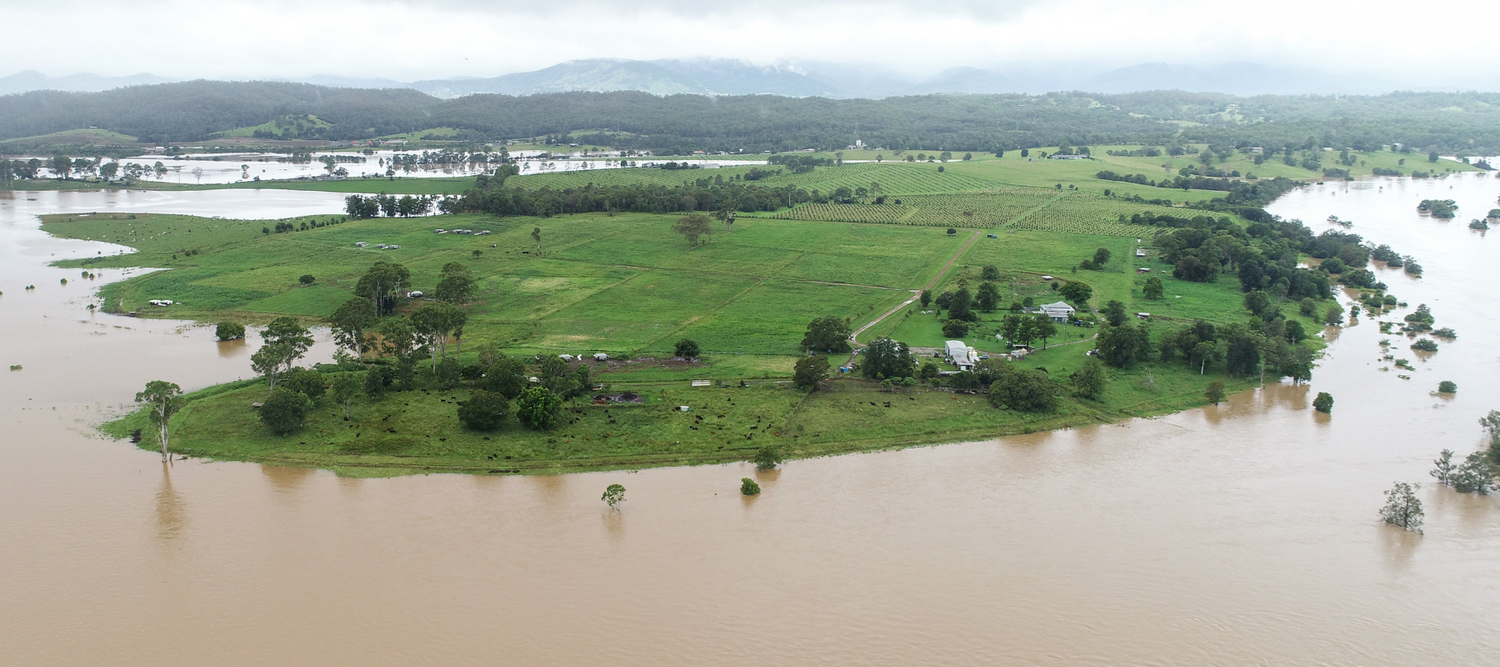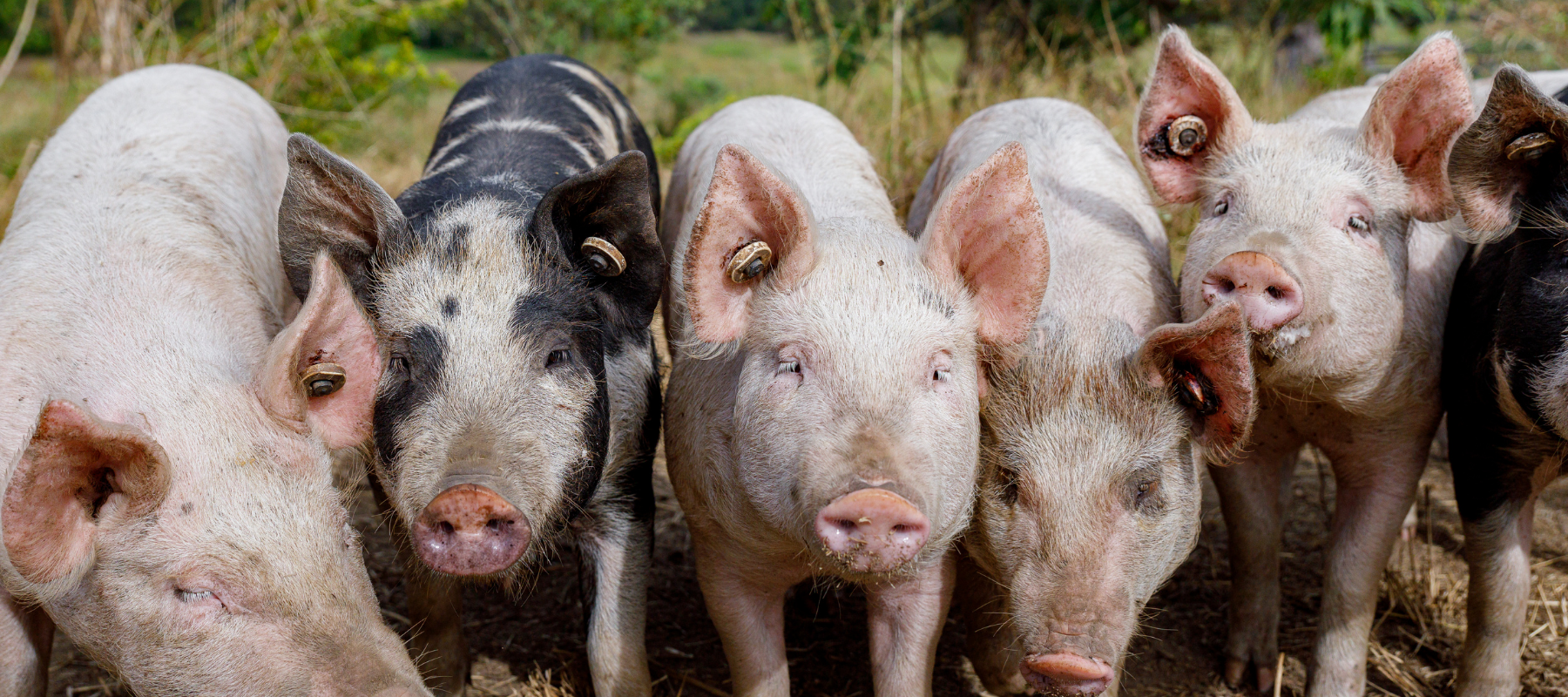It’s been very tough for so many affected by the severe flooding in our local area, as well as Brisbane, northern New South Wales and beyond. Thankfully we are starting to see things bounce back already and the farm is showing impressive resilience, despite the damage to infrastructure, including seven kilometres of fencing.
Our farm is on a flood plain, so we have structured it to cope with inevitable flooding. When we were hit with 850mls of rain over four days, two-thirds of Forage Farms was submerged in about five metres of water. Our priority was to move the cattle up to higher ground to join the chickens and pigs. Having enough feed at the top of the farm to sustain all the animals has been challenging. We were land locked for several days, and the soupy conditions did not make it easy to bring in feed for the pigs and chickens. On top of this, we had no power, phone, or internet – a key learning from this event is we need better backup power sources such as generators, which of course, come at a significant cost.
Despite this, we are impressed with how the higher ground is bouncing back and coping with the increased impact of having more animals grazing. We have enough feed to last another 21 days while the lower ground dries out and fences are repaired. We would also like to give a shout out to our big-hearted delivery driver, Jamie, who has offered to change hats and help with the fencing!
The catastrophic nature of these floods is getting a lot of attention; however, we have been experiencing floods like this for 1000s of years. The degradation of so much of our landscape is not helping. A lack of vegetation to slow the flow of the water means that it moves faster and does a lot more damage. Some of the vertical riverbanks in our region are now eroded to four and five metres deep. All that soil has been taken out into the ocean. It’s simply not sustainable to let that keep happening. We need to build a more resilient landscape to withstand these events.
Our commitment to having a diversity of plant life and the practice of natural sequence farming techniques has created resilience and the ability to recover. Whichever way you look at it, there is a cost – be it a tax to repair landscapes and climate, your health, or the cost of better produced food.
There are so many ways you can start to create change. If you want to know how it may be time to learn more about natural sequence farming.



